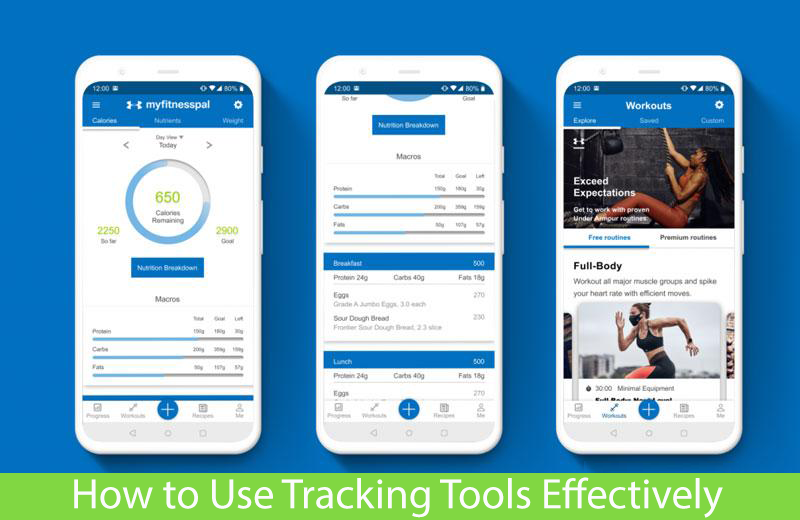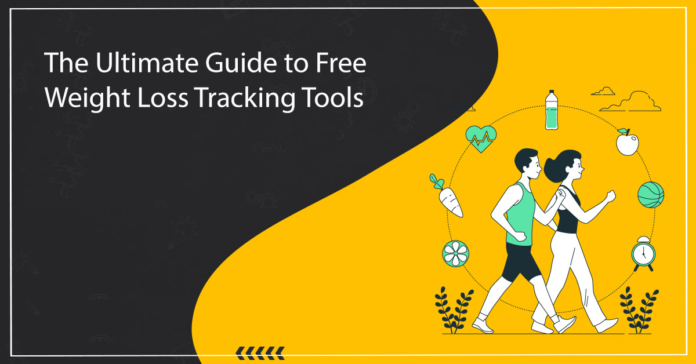Introduction
In recent years, tracking your weight loss journey has become easier than ever, thanks to a range of free tools that provide support and structure. These tools help users stay on track with their fitness goals and offer insights that can make the weight loss process more effective and sustainable.
Why Track Your Weight Loss Progress?

Tracking your weight loss journey has several benefits. It helps you stay accountable, provides motivation by showing progress over time, and allows you to make informed adjustments to your diet or exercise routine. Monitoring factors like calorie intake, workout frequency, and weight change can lead to better outcomes and foster a greater sense of accomplishment.
Benefits of Free Weight Loss Tracking Tools
Free tracking tools provide a cost-effective solution for those who want to monitor their health. These tools often include basic yet essential features like daily food logs, activity trackers, and weight tracking, allowing users to track progress without a subscription. Additionally, free options can offer surprising depth, as many developers aim to make their basic versions competitive by providing high-quality insights.
Criteria for Choosing the Right Tool
When choosing a tracking tool, consider the following criteria:
- Ease of Use: The tool should have a simple and user-friendly interface.
- Feature Availability: Look for features that align with your needs, such as calorie counters, workout tracking, and progress graphs.
- Compatibility: Ensure the tool is compatible with your devices and integrates well with other health and fitness apps.
- Customization Options: Advanced users may benefit from tools with deeper data analysis capabilities and customization options.
Popular Types of Free Weight Loss Tracking Tools
![]()
Mobile Applications
Mobile apps are the most popular tools for tracking weight loss, offering accessibility and convenience for tracking on the go.
Key Features
Most weight loss apps offer features like:
- Calorie Counting: Log daily food intake and view calorie estimates.
- Exercise Tracking: Monitor your workouts, steps, and activity levels.
- Goal Setting: Set weight loss, muscle gain, or maintenance goals and monitor your progress.
Popular Apps
- MyFitnessPal: Offers extensive food logging and a large food database.
- Lose It!: Focuses on calorie tracking with an intuitive interface.
- Yazio: Features meal planning and nutritional insights.
Weight Loss Websites
Web-based tools provide a larger interface for those who prefer tracking from a computer.
How They Work
These sites function similarly to apps, allowing users to input their weight, food intake, and exercise logs. Some offer more detailed analytical features, providing a comprehensive view of your weight loss journey.
Popular Websites
- SparkPeople: Known for its community aspect and comprehensive tracking.
- Cronometer: Offers detailed nutrient analysis and micronutrient tracking.
Wearable Devices
Wearables, like fitness trackers and smartwatches, offer a hands-free approach to tracking.
Advantages and Limitations
Wearables track activity levels, heart rate, and sleep automatically. However, they may require app syncing to get a complete picture of your diet and calories.
Popular Brands
- Fitbit: Known for step tracking, calorie burn estimates, and integration with fitness apps.
- Garmin: Popular for more advanced sports and activity tracking.
How to Use Tracking Tools Effectively

Input Accurate Information
For the most accurate insights, input correct information, including:
- Weight and Height: Set an accurate baseline for tracking.
- Food Intake and Exercise: Record all meals, snacks, and exercises, even on days when goals aren’t met.
Set Clear Goals
Define specific goals, such as:
- Weight Loss: Set a goal for gradual weight loss.
- Muscle Gain: Adjust calorie and protein intake to support muscle growth.
- Weight Maintenance: Focus on balance between calorie intake and activity.
Monitor Progress Regularly
Check in on your progress through charts and statistics. Reviewing trends over time helps you see patterns and stay motivated.
Adjust Your Plan
Based on your results, make changes as needed. For instance, if your progress stalls, reassess your calorie intake or exercise routine.
Choosing the Right Tool for Your Needs
Beginners
For those new to tracking, choose an app with a simple interface and essential features.
Experienced Users
If you’re more experienced, look for tools that allow greater customization and detailed analysis, such as tracking specific nutrients or workout metrics.
Busy Users
For users with busy schedules, tools that sync across devices and offer reminders can be beneficial.
Important Tips for Using Weight Loss Tracking Tools
Don’t Focus Solely on Numbers
While tracking is useful, remember that health is more than just numbers. Listen to your body and pay attention to overall well-being.
Pair with a Balanced Diet and Exercise
A tracking tool works best when combined with a nutritious diet and regular exercise routine.
Be Patient and Realistic
Weight loss is a gradual process. Set realistic goals and stay consistent.
Conclusion
In summary, free weight loss tracking tools offer valuable support for anyone on a weight management journey. By choosing a tool that fits your goals and using it effectively, you can achieve better outcomes. For beginners, start with a simple app and build from there as you become more comfortable with tracking. Stay patient, be consistent, and focus on building a healthy lifestyle.



